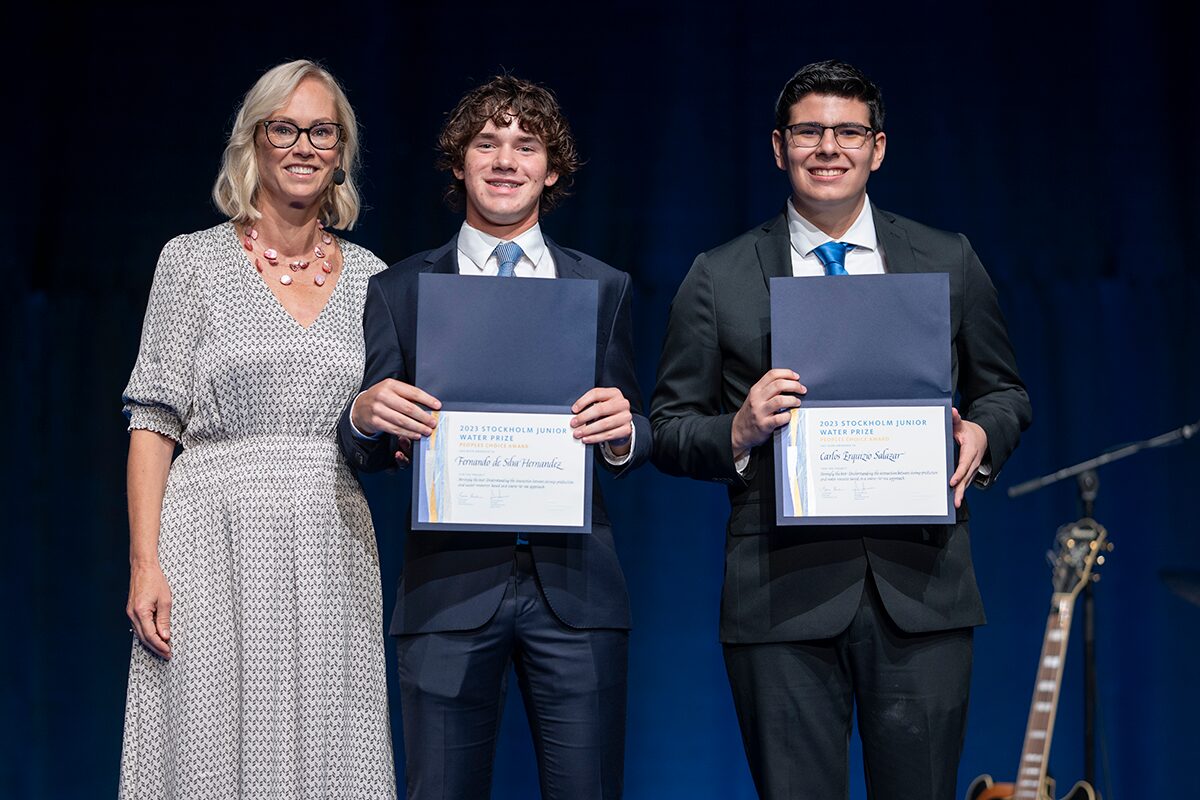The last few years have seen a marked increase in both the recognition and application of the source-to-sea approach. This increased awareness of the connection between freshwater and the ocean was evident during this year’s Stockholm Junior Water Prize, with all three finalists’ projects having a marine connection. The People’s Choice Award was even awarded to a project with a specific source-to-sea focus. We caught up with winners, Fernando de Silva Hernández and Carlos Iván Erquizio Salazar, to discuss their project in more detail.
Congratulations on winning the 2023 People´s Choice Award for the Stockholm Junior Water Prize (SJWP). With your project “Shrimply the best: Understanding the interaction between shrimp production and water resources based on a source-to-sea approach”, you stressed the importance of using an integrated source-to-sea approach to holistically comprehend the interlinkages between shrimp farming in Bahía de Kino, Sonora, marine ecosystem health, and the sustainability of its services of the Gulf of California.
How did you come up with the idea of using the source-to-sea approach for your project?
Carlos: Our project is based on how shrimp farms affect our maritime ecosystems. As a first step, we started to research information on what was causing the pollution and realized that it originated from human activities on land. As a next step, we informed ourselves about the term source-to-sea and what it referred to.
Using the source-to-sea approach as our methodology of choice, we realized that problems are much easier to unpack and address once we understood where they originally came from. By doing so, we aimed to focus on the problem at its source. In addition, we also combined the source-to-sea approach with the circular economy approach. As the circular economy model targets products after their use, feeding them back into the life cycle of a resource, it complements the source-to-sea approach, as both work toward a more sustainable production.
Fernando: After talks with the wonderful team at Universidad Nacional Autónoma de México (UNAM), we came up with the idea of using the source-to-sea approach. Our project initially focused solely on the utilization of Biofloc Technology (BFT). Incorporating a source-to-sea approach, however, gave additional depth and clarity to the importance of a truly sustainable aquaculture. It especially helped to understand how the parts of the shrimp farming process, even those that occurred on land, impacted the ecological output.
In all honesty, we had not heard of this concept before the contest. Hence why we think making the source-to-sea approach well known globally is a very important goal.

